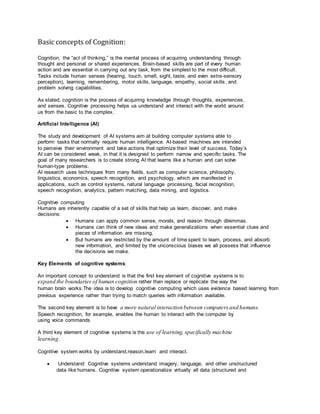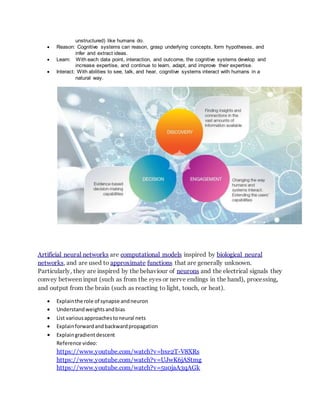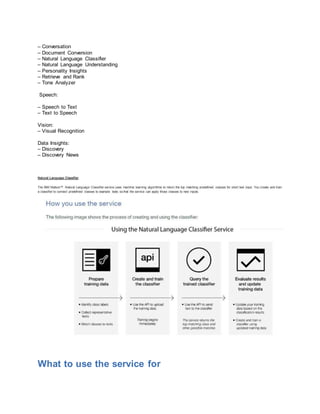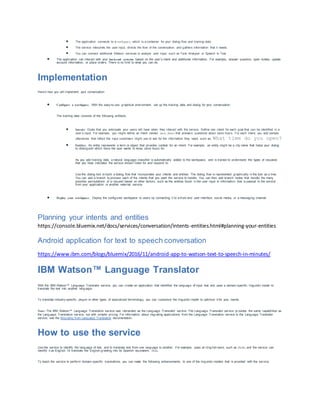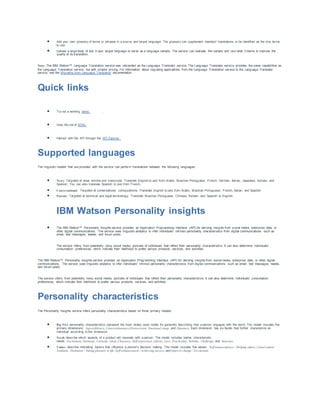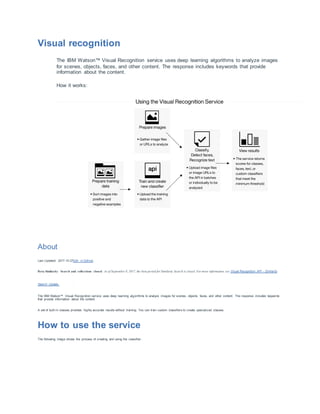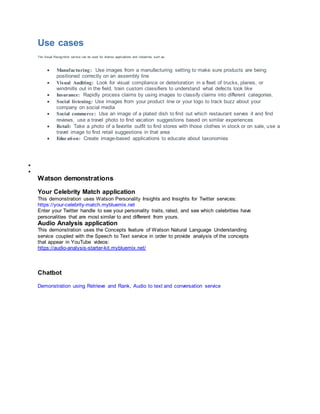The document discusses the fundamental concepts of cognition, highlighting how it encompasses the mental processes involved in learning and problem-solving. It also explores artificial intelligence and cognitive computing, emphasizing the development of systems that enhance human cognition through natural interactions and machine learning. Various IBM Watson APIs are introduced, showcasing their applications in natural language processing, speech recognition, and personality insights.
